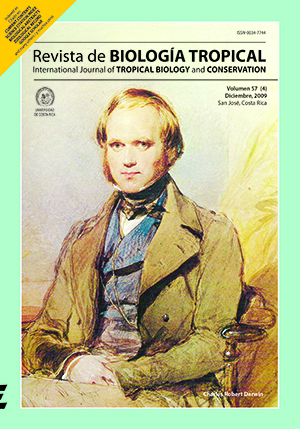Resumen
Intra-specific body size variation is common and often is assumed to be adaptive. Studies of body size variation among sites should include or consider environmental and ecological variables in their designs. Additionally, reciprocal transplant or common garden studies will support which variables are really contributing to the observed body size variation. This study analyzed the microgeographic body size variation in Anolis mariarum, a small lizard endemic to Antioquia, Colombia. Parameters such as body size, shape, and lepidosis variation were quantified in 217 adult A. mariarum, belonging to six populations separated by less than 80km. Results showed that significant body size variation was not related to differences among sites in mean annual temperature, but covaried with mean annual precipitation, with the largest individuals occurring in dryer sites. Mark-recapture data obtained from 115 individuals from both the wettest and dryest sites from October 2004 to April 2005 showed that growth rates were higher at the latter. Eight males from each site were captured at the end of the mark-recapture study and reared for two months under identical conditions in a common garden study. Individuals from both sites grew faster when reared in the laboratory with food provided ad libitum. Although growth rates of males from the two populations did not differ significantly in the laboratory, males from the dryest site still maintained a significantly larger asymptotic body size in their growth trajectories. Multivariate analyses also demonstrated that both males and females from the six populations differed in terms of body shape and lepidosis. However, only female body size was found to covary significantly with an environmental gradient (precipitation). A. mariarum does not conform to Bergmann's rule, but the relationship found between mean body size and asympotic growth with mean annual precipitation at these sites needs further analysis. Generally, studies of intra-specific body size variation should consider a number of additional phenotypic traits to provide stronger baseline information on the degree of overall divergence among populations, including those likely to be selectively neutral, before interpreting results of analyses on the body size differences.##plugins.facebook.comentarios##

Esta obra está bajo una licencia internacional Creative Commons Atribución 4.0.
Derechos de autor 2009 Revista de Biología Tropical
Descargas
Los datos de descargas todavía no están disponibles.






